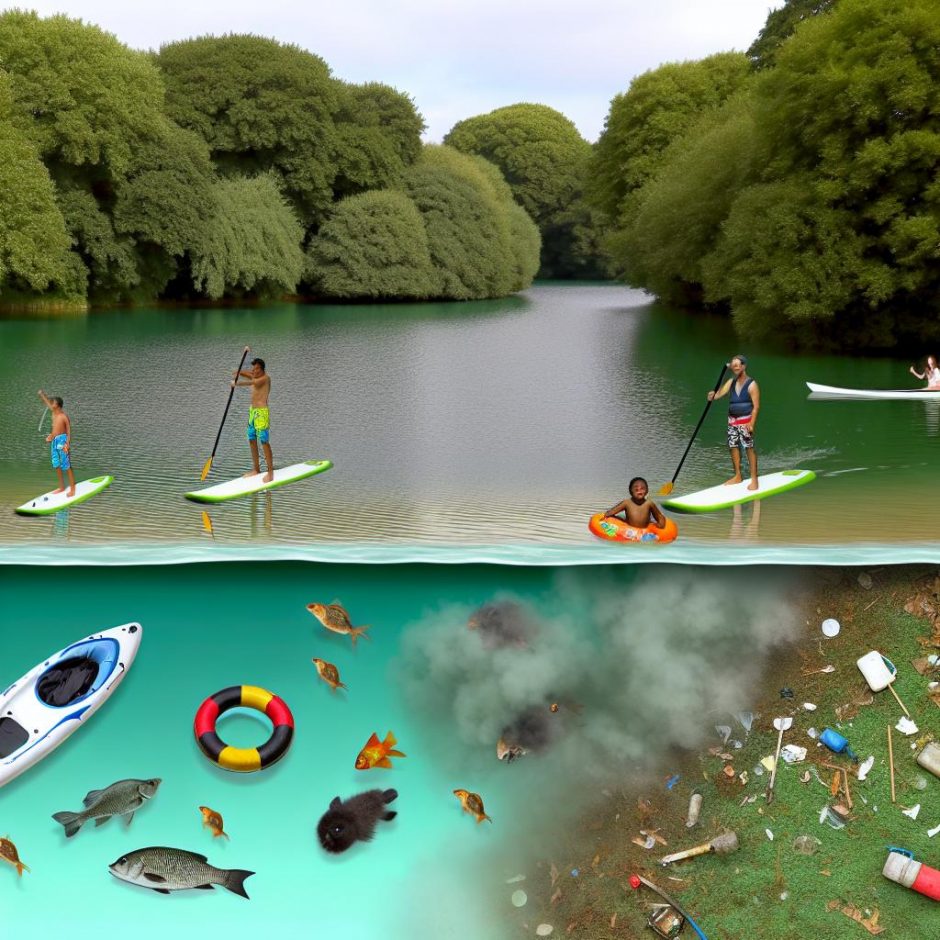The Environmental Impact of Water Sports
Water sports stand as popular recreational activities that captivate the attention and interest of millions of enthusiasts globally. However, amidst the excitement and enjoyment they bring, their environmental impact is a concern that frequently goes unnoticed. Recognizing and comprehending these effects is indispensable for fostering sustainable practices in these activities and ensuring their long-term viability.
Pollution and Ecosystem Disturbance
The thrill of water-based activities like jet skiing, wakeboarding, and motorboating often comes with hidden environmental costs, notably in the form of water pollution. The engines employed in these sports frequently become sources of harmful pollutants. These engines can introduce oil and fuel to the aquatic ecosystem, leading to diminished water quality and long-lasting ecological harm. The ramifications extend beyond tangible pollutants; noise pollution generated by motorized equipment poses a significant disruptor to local wildlife. This auditory interference can severely disturb the natural behaviors of many species, interfering with crucial activities such as feeding and mating.
Adopting eco-friendly alternatives, such as electric boats and quieter motors, presents an opportunity to substantially mitigate these negative impacts. These adaptations promise a reduction in noise and chemical pollution, offering a more harmonious existence with aquatic environments. For further insights into sustainable boating practices and developments, one may explore the information found at the cited guide.
Impact on Marine Life
Apart from the pollution introduced by water sports, the physical presence of enthusiasts in fragile marine environments raises concerns. Activities that invite direct interaction with underwater landscapes, such as snorkeling and scuba diving, can inadvertently inflict damage on delicate marine organisms, particularly coral reefs and other vulnerable habitats. Without careful management and responsible conduct, snorkelers and divers may unintentionally harm these intricate ecosystems, primarily by touching, kicking, or otherwise disturbing the corals.
Addressing this issue involves a robust educational framework centered around sustainable diving practices. Educational programs that emphasize minimizing physical contact with marine life and raising awareness about the ecological significance of these habitats are critical. Such education ensures that both enthusiasts and operators remain committed to preserving the integrity and beauty of underwater ecosystems.
Use of Non-biodegradable Equipment
A significant aspect of many water sports involves the use of equipment crafted from non-biodegradable materials. Synthetic wetsuits and associated gear, while enabling participants to engage more comfortably in such sports, contribute long-term ecological challenges due to their extended decomposition timelines, lasting decades in many cases. This presents a growing problem of pollution when these materials are discarded improperly.
Opting for equipment manufactured from recycled or sustainable materials offers a practical solution that participants can adopt. By making more informed decisions regarding their gear, water sports enthusiasts play a pivotal role in reducing the environmental footprint of their activities, promoting a culture of sustainability within the community.
Water Usage and Resource Consumption
Water sports like water skiing and wakeboarding are notorious for their substantial water consumption. In regions where water scarcity is a pressing concern, such consumption heightens existing environmental challenges. The infrastructure catering to these activities, including docks and marinas, further complicates the scenario by potentially altering local hydrology and disrupting natural water flow patterns.
To address this, the implementation of improved water management practices and the adoption of water-saving technologies are imperative steps. These efforts aim to balance recreational water use while upholding broader conservation goals. Innovations and insights into effective water management techniques, especially in recreational areas, can be explored via resources such as WaterWorld.
Regulatory and Management Efforts
The establishment of comprehensive environmental management and regulatory frameworks is a cornerstone for minimizing the negative impacts of water sports on the environment. Policies designed to restrict access to environmentally sensitive areas, set limits on engine emissions, and mandate the use of eco-friendly materials can significantly curb the detrimental effects associated with these activities.
The success of these regulations hinges on the collaboration among policymakers, environmental organizations, and the sports community. Only through collective efforts and shared responsibilities can these regulations be effectively enforced, ensuring that environmental protection is not only a discussed agenda but a concrete practice within the realm of water sports.
Conclusion
While the myriad recreational and health benefits deriving from water sports cannot be overstated, it remains equally important to acknowledge and address their environmental impacts. By championing sustainable practices and investing in educating participants and operators alike, we lay the groundwork for future generations to partake in these activities without compromising the planet’s health. Striking a balance between recreation and responsibility fosters a collective effort towards the preservation of delicate aquatic ecosystems, allowing water sports to complement rather than conflict with the natural world.

